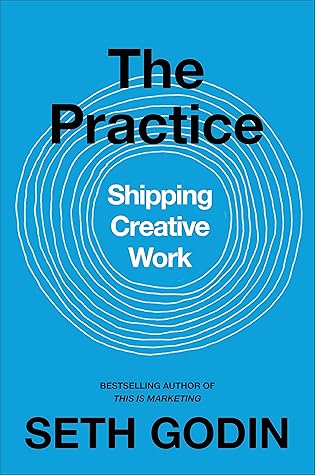More on this book
Community
Kindle Notes & Highlights
The magic of the creative process is that there is no magic
A genius is the one most like himself. THELONIOUS MONK
Sculptor Elizabeth King said it beautifully, “Process saves us from the poverty of our intentions.”
Creativity doesn’t repeat itself; it can’t. But the creative journey still follows a pattern. It’s a practice of growth and connection, of service and daring. It’s also a practice of selflessness and ego in an endless dance.
The Bhagavad-Gita says, “It is better to follow your own path, however imperfectly, than to follow someone else’s perfectly.”
Askıda ekmek: there is bread on the hook. It’s an ancient tradition in Turkey. When buying a loaf at the local bakery, you can choose to pay for an extra loaf and, after bagging your purchase, the owner will hang the second loaf on a hook on the wall. If a person in need comes by, he or she can ask if there’s anything on the hook. If so, the bread is shared, and the hunger is relieved. Perhaps as important, community is built.
Painting is something you do to a house. Art is the work we do where there is no right answer—and yet the journey is worth the effort.
Art is the generous act of making things better by doing something that might not work.
If you want to change your story, change your actions first. When we choose to act a certain way, our mind can’t help but rework our narrative to make those actions become coherent. We become what we do.
It all comes back to trusting our self to create the change we seek. We don’t agree to do that after flow arrives. We do the work, whether we feel like it or not, and then, without warning, flow can arise. Flow is a symptom of the work we’re doing, not the cause of it.
“Do what you love” is for amateurs. “Love what you do” is the mantra for professionals.
Problems have solutions. That’s what makes them problems. A problem without a solution isn’t a problem, it’s simply a situation.
Kiasu is the Hokkien word for “the fear of being left behind” or not getting enough. It’s a common affliction, not only in Singapore, where the phrase originates, but around the world.
The practice is agnostic about the outcome. The practice remains, regardless of the outcome.
65. Four Kinds of Good “This is what I saw in my head.” (It’s good to me.) “This is accepted and admired by a specific circle of people.” (It’s good for the tribe.) “I got paid well for this.” (I’m clear about what matters to me.) “This is really popular, it’s a hit.” (We struck a chord with the masses.)
Sales is about change: turning “I never heard of it” into “no” and then “yes.”
To a drowning man, everyone else is a stepping-stone to safety.
If the problem can be solved, why worry? And if the problem can’t be solved, then worrying will do you no good. SHANTIDEVA
Talent is something we’re born with: it’s in our DNA, a magical alignment of gifts. But skill? Skill is earned. It’s learned and practiced and hard-won.
“You have two options,” she told Rolling Stone, “You can stay the same and protect the formula that gave you your initial success. They’re going to crucify you for staying the same. If you change, they’re going to crucify you for changing. But staying the same is boring. And change is interesting. So of the two options,” she concluded cheerfully, “I’d rather be crucified for changing.” Leaders make art and artists lead.
128. Intentional Action Has a Few Simple Elements Determine who it’s for. Learn what they believe, what they fear, and what they want. Be prepared to describe the change you seek to make. At least to yourself. Care enough to commit to making that change. Ship work that resonates with the people it’s for. Once you know whom it’s for and what it’s for, watch and learn to determine whether your intervention succeeded. Repeat.
Rejecting the trap of credentialing opens the door to fake experts. If no credential is needed, if everyone is qualified, leveraged, and able to do this job, aren’t we inviting hacks and charlatans in to do important work?
Credentialing lulls us into false confidence about who is actually an expert. The fact that you have a degree doesn’t mean you have insight, experience, or concern. You’ve acquired a piece of paper, but that doesn’t mean you care.
When we stop worrying about whether we’ve done it perfectly, we can focus on the process instead.
Writing isn’t the same as talking, because writing is organized and permanent.
Flow is the result of effort. The muse shows up when we do the work. Not the other way around.
Befriending your bad ideas is a useful way forward. They’re not your enemy. They are essential steps on the path to better.
In fact, there were two key differences between great competitors and good ones: Skill. The best swimmers swim differently than the ones who don’t perform as well. They do their strokes differently; they do their turns differently. These are learned and practiced skills. Attitude. The best swimmers bring a different attitude to their training. They choose to find delight in the parts that other swimmers avoid.
To be the best in the world means that someone with options and information will choose you. Because your version of “best” matches what they seek, and because you’re in their consideration set (their world).
But without constraints, we’re left with no tension and no chance for innovation or surprise.


